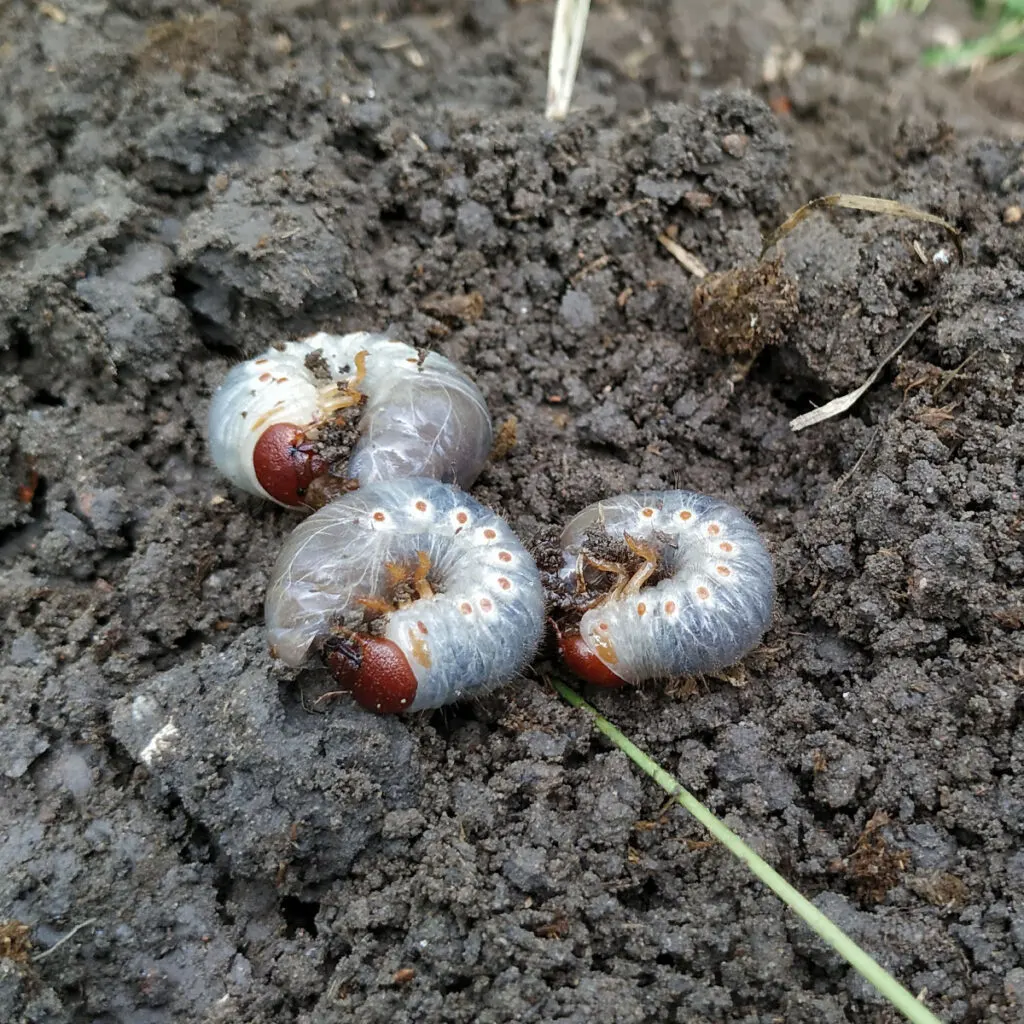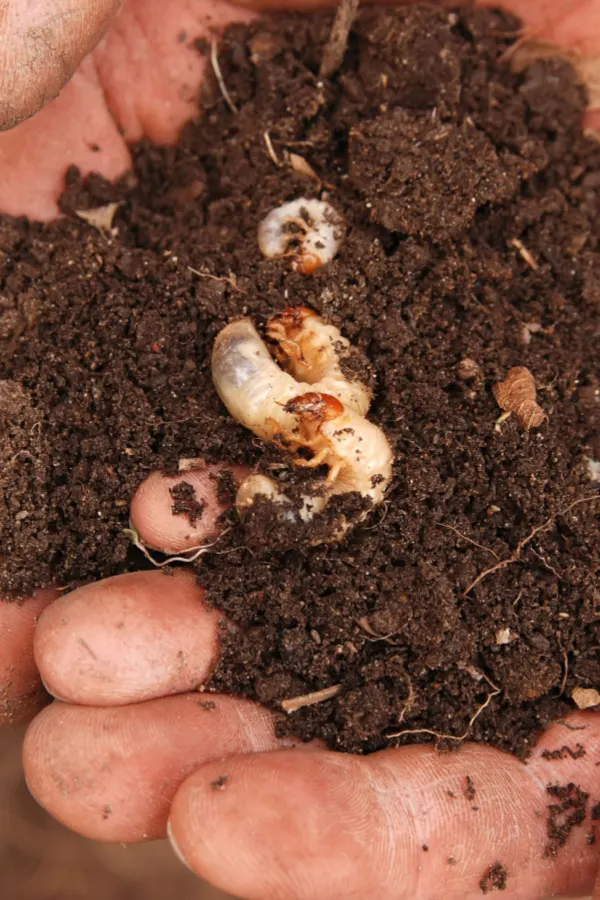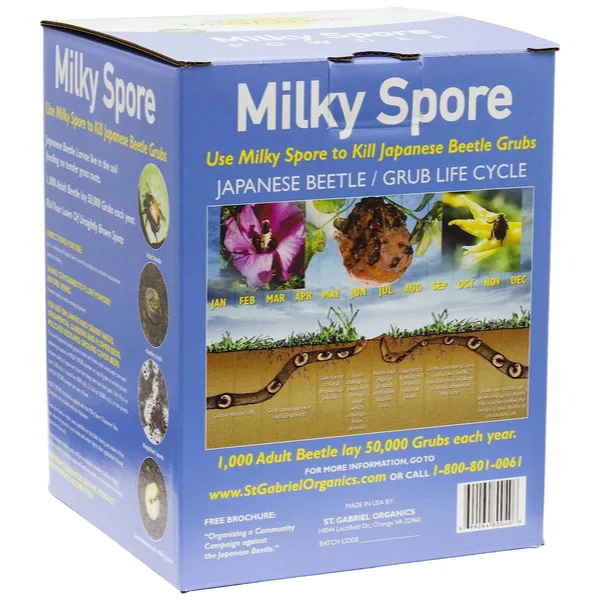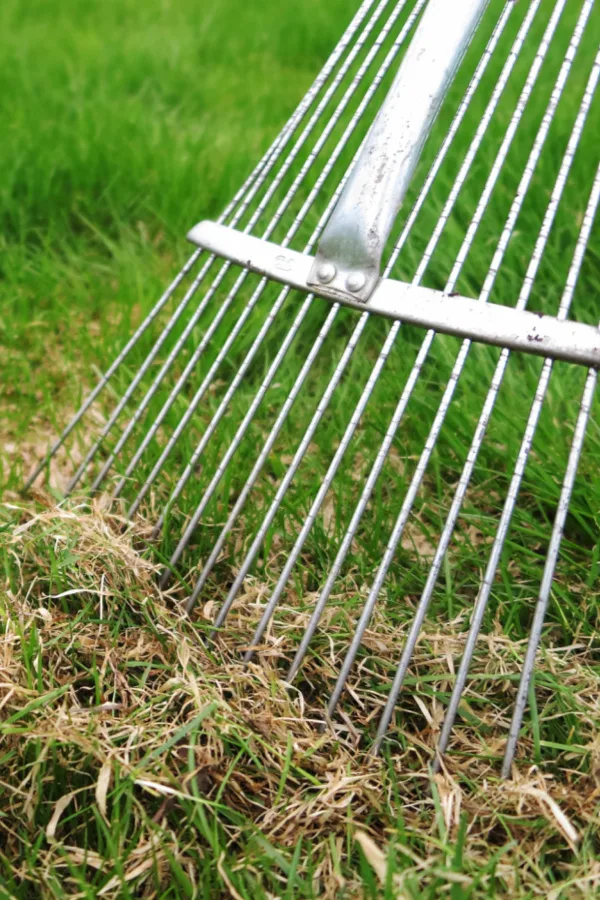Looking for a way to get rid of grubs from your lawn and garden – and keep ground moles away for good?
One thing is for sure, ground moles love grubs! In fact, where ever there are grubs in the soil, you can bet the house there are going to be ground moles taking up residence nearby. And when they do, you can also be sure your lawn, flowerbeds and garden are all at risk of incurring serious damage.
Grubs can do plenty of damage all by themselves, even without attracting ground moles. Grubs both loosen and uproot grass as they burrow underneath to hide out and feed. And as they feed on the roots of the grass above, they steal valuable nutrients, often causing lawns to brown and wilt.
If enough grubs are present, they can actually kill off large areas of lawn. But grubs don’t limit their damage to just grass. They also can feed off of the roots of vegetable and flowers – weakening them as well in the process.
If that wasn’t enough, grubs become beetles, and once they emerge out of the soil, they once again devour and destroy plants as adults – feeding on and destroying everything from vegetable and flower plants to bushes, shrubs and trees.
Attracting Moles To Your Yard – How To Get Rid Of Grubs
Perhaps worst of all, grubs attract moles. Grubs are a staple of a ground mole’s diet. And wherever grubs thrive, ground moles will gladly co-exist for an easy meal.
Although as a natural predator moles will reduce the population of grubs, their burrowing through the soil of your lawn, garden and flowerbeds can cause major damage in the process. When moles tunnel, it not only leaves unsightly tunnel marks above ground, it also can disturb and kill the roots of grass, plants and even small shrubs.
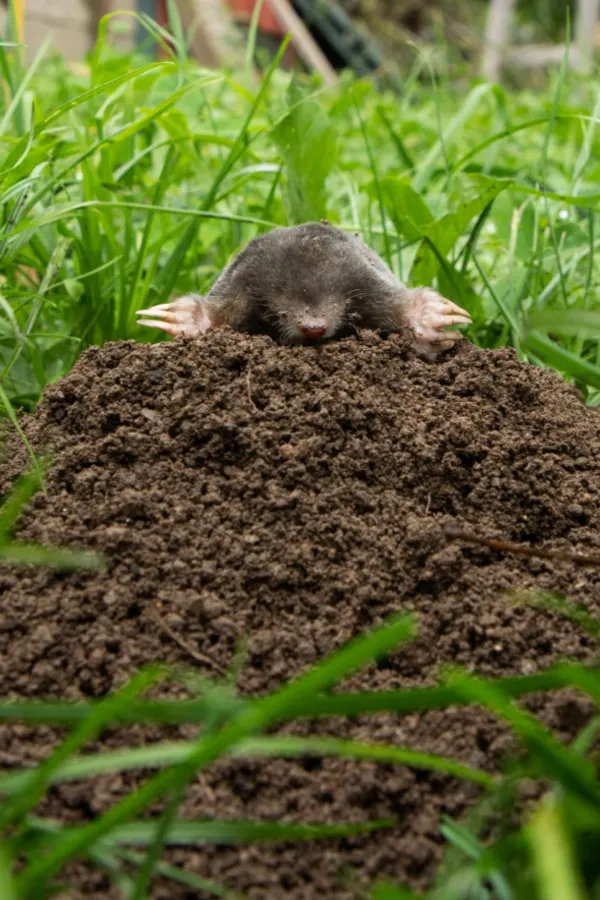
For all of these reasons and more – eliminating grubs is vital to both protecting your lawn and plants – and keeping ground moles away. After all, if there is no food source for the moles, they will simply move on to greener pastures.
With that in mind, here is a look at exactly what grubs are and how they live – and how to eliminate them from your landscape with a few simple and easy all-natural methods.
How To Get Rid Of Grubs For Good!
What are Grubs?
The larval stage of beetles is known as grubs, irrespective of the beetle species. They are characterized by the “C” shape they form when threatened or touched. Grubs hibernate in the winter and then begin to wreak their havoc in the warmer months by feasting on the roots of grass and plants.
Grubs tend to hide beneath the upper soil surface, making them difficult to detect. But if you have large patches of brown grass or mole tunnels throughout your lawn, garden or flowerbeds, rest assured you have grubs!
Grubs usually reside 2-4 inches deep in the soil. Dig the soil up to a depth of four inches deep – if you notice 8 to 10 grubs instantly, it’s a sign of a serious grub problem. Most healthy lawns and gardens can survive less than ten grubs per square foot.
As highlighted above, grubs mature into beetles. Once grubs mature, they emerge to fly around, looking for a suitable place to lay their eggs to start the whole process over again.
The good news is that by eliminating them in the grub stage, you not only will keep moles out of your yard – you will also keep beetles from later damaging your plants and laying even more eggs!
Fortunately, there are a few effective ways to get rid of grubs without having to spray harmful and questionable chemicals on your lawn, flowers or vegetable plants. With that in mind, here is a look at some simple and yet quite effective solutions!
How To Get Rid of Grubs – Naturally
Neem Oil
A homemade neem oil spray can be a great way to eliminate grubs fast. Neem oil is all natural and is the oil from the seed of a neem tree. It has insecticidal and anti-bacterial properties, making it highly useful to have on hand!
To kill grubs with neem oil, simply add two tablespoons of neem oil to 2 teaspoons of liquid soap and 1 gallon of water. Mix the solution well and then use a sprayer to coat your lawn. It may take a few applications, but it is highly effective in eliminating grub populations.
It is best to spray neem oil in the early morning or evening to keep important pollinators like bees and butterflies safe. Once dry, it cannot harm either. Affiliate Product Link : Pure Neem Oil

Dish Soap & Water – How To Get Rid of Grubs – Naturally
If you have only a mild issue with grubs, a simple mixture of dish soap with water can usually keep populations under control with ease.
To make, mix 1 tablespoon of dish soap to every 1 quart of water. Apply the mixture with a sprayer by coating your lawn, garden or flowerbed soil surface. Repeat the process every few days for seven to ten days and the population of grubs will reduce drastically.
Milky Spore – How To Get Rid of Grubs – Naturally
Milky spore bacteria is another all-natural way to control beetle grubs. It works especially well on Japanese beetle grubs. Since it is a natural bacteria, it has no side effects on your lawn or garden plants. It also has lasting power in keeping grubs away!
Apply it as a spray once in late spring and again once during the summer. If repeated for two years in a row, it can usually keep out grubs for ten years or more! Its effectiveness depends on the soil temperature (ideally 60F to 70F) and the concentration of bacteria.
Diatomaceous Earth – How To Get Rid of Grubs – Naturally
Diatomaceous earth can tackle not only grubs but many other garden worms. It will dehydrate grubs as it cuts their outer coating. Simply dust it in and around your garden or dust on lawns to kill the grubs.
The only downside to Diatomaceous Earth is that it can kill beneficial insects as well. One or two applications is usually enough to reduce the grub population. Product Affiliate Link : Diatomaceous Earth
How To Keep Grubs From Coming Back – How To Get Rid Of Grubs For Good
In addition to treating your lawn and gardens for grubs, you can also help to keep them away by avoiding a few things that can lead to creating an environment favorable for grubs. Two of the biggest are avoiding over watering your lawn and using commercial, non-organic fertilizers.
Use Organic Fertilizers – How To Get Rid of Grubs
The problem with synthetic/chemical-based fertilizers is that they kill beneficial nematodes. On the other hand, organic fertilizers can power lawns and gardens without impacting the beneficial insects and worms.
Nematodes can kill the grubs, and without them in the soil, grubs have free reign. There are a lot of advantages to using organic fertilizers, and helping to eliminate grubs is just one more great one!
Control Moisture – How To Get Rid of Grubs
Grubs prefer moisture-rich soil. Excessive watering of lawns, flowerbeds and garden areas can create a moisture rich soil that makes it easy for grubs to find a home. Water only when necessary – and avoid watering large areas. Instead, water plants right where they need it at their root zones.
11. De-Thatch & Aerate Soil Regularly – How To Get Rid of Grubs For Good
De-thatching involves removing the thatch layer from the soil to deny protective shelter for grubs. Once the thatch is removed, grubs are exposed to the outside environment and the sun. The resulting heat penetrating the soil and better aeration will drive them away.
Here is to getting rid of grubs in your lawn and garden spaces – and to keeping beetles and ground moles at bay too! Happy Gardening – Jim and Mary
Jim and Mary Competti have been writing gardening, DIY and recipe articles and books for over 15 years from their 46 acre Ohio farm. The two are frequent speakers on all things gardening and love to travel in their spare time.
As always, feel free to email us at thefarm@owgarden.com with comments, questions, or to simply say hello! You can sign up for our free email list in the subscribe now box in the middle of this article. Follow us on Facebook here : OWG Facebook. This article may contain affiliate links.

